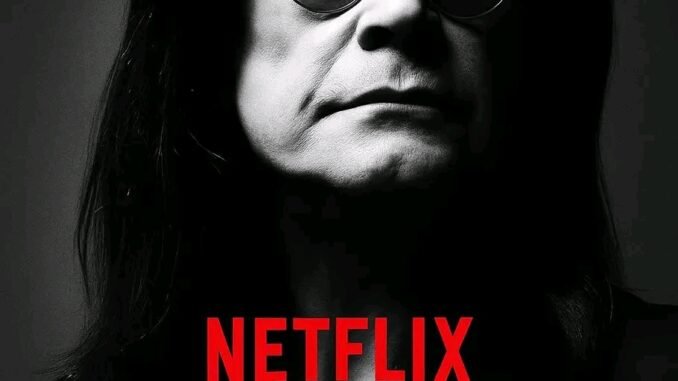
OZZY OSBOURNE: NO ESCAPE FROM NOW — The Untamed Journey of the Prince of Darkness
OZZY OSBOURNE: NO ESCAPE FROM NOW — The Untamed Journey of the Prince of Darkness
There are legends in rock, and then there’s Ozzy Osbourne — a force of nature who turned chaos into an art form and darkness into immortality. From a rough-edged kid in Birmingham to the crowned “Prince of Darkness,” Ozzy’s story is one of pain, rebellion, laughter, and survival. “No Escape From Now” — the fitting title of his latest retrospective — captures not just the life of a man who defied death countless times, but also the spirit of a musician who helped define heavy metal itself.
Born John Michael Osbourne in December 1948, Ozzy grew up in Aston, a working-class district in Birmingham, England. His early life was shaped by hardship and mischief — petty thefts, school struggles, and brief jail time. Yet within that chaos, there was something forming: a voice that would soon change rock forever. When he joined forces with Tony Iommi, Geezer Butler, and Bill Ward in the late ’60s, something almost supernatural happened. Black Sabbath was born — a band that would turn rock music darker, heavier, and infinitely more powerful.
With Sabbath’s debut in 1970, heavy metal found its godfather. The eerie riffs of “Black Sabbath,” the pounding menace of “War Pigs,” and the raw urgency of “Paranoid” built a new sonic temple for those disillusioned by peace-and-love hippie optimism. Ozzy’s vocals — haunting, unrefined, but deeply human — became the sound of rebellion for a generation that saw the world burning. Sabbath’s rise was meteoric, but so was their self-destruction. Drugs, alcohol, ego clashes, and relentless touring pushed the band to the edge.
By 1979, the inevitable happened: Ozzy was fired. For most artists, that would’ve been the end. For Ozzy, it was the beginning of a second life. With the help of his determined wife and manager, Sharon Osbourne, he rebuilt himself from the ashes. His solo debut, Blizzard of Ozz (1980), wasn’t just a comeback — it was a declaration of survival. With guitarist Randy Rhoads, Ozzy unleashed an album that blended blistering guitar virtuosity with anthemic hooks. “Crazy Train,” “Mr. Crowley,” and “Goodbye to Romance” became instant classics, proving that the Prince of Darkness still ruled the night.
But tragedy, as always, lurked close. In 1982, Randy Rhoads died in a freak plane crash, shattering Ozzy’s spirit. Yet even through grief, he soldiered on, releasing albums that would become pillars of heavy metal: Diary of a Madman, Bark at the Moon, and No Rest for the Wicked. Each one carried that unmistakable Osbourne signature — a blend of theatrical insanity, heartfelt emotion, and wicked humor.
The 1980s made Ozzy a global icon, but also nearly destroyed him. His wild stage antics — biting the head off a bat, being banned from entire cities, and public intoxication arrests — turned him into tabloid fodder. Yet beneath the madness was a man fighting his demons in real time. Addiction followed him for decades, nearly costing him his marriage, his career, and his life. Still, every time fans thought he’d fall for good, Ozzy clawed his way back.
The 1990s saw him reinvented once more. The No More Tears era brought a more mature but no less ferocious Ozzy. With hits like “Mama, I’m Coming Home” and “No More Tears,” he proved that even the Prince of Darkness could find beauty in vulnerability. Then came Ozzfest, the festival Sharon and Ozzy created in 1996 that became a rite of passage for every major metal act of the era — from Slipknot to System of a Down. Ozzy was no longer just a performer; he was a patriarch of metal, nurturing the next generation of chaos.
And then came television. In 2002, The Osbournes premiered on MTV and changed pop culture forever. Millions watched in disbelief as the godfather of heavy metal stumbled through domestic life, cursing at remote controls and mumbling his way into America’s heart. What could have been a mockery became a revelation: behind the madness was a loving father and husband, a man as confused and human as anyone else.
In the decades since, Ozzy’s life has been a war between fragility and fire. Health battles, near-fatal injuries, and the Parkinson’s diagnosis in 2020 could have silenced him — but they didn’t. His albums Ordinary Man (2020) and Patient Number 9 (2022) were testaments to endurance, featuring collaborations with legends like Elton John, Eric Clapton, and Jeff Beck. Even as his body weakened, his voice — that unmistakable cry from the depths — refused to fade.
“No Escape From Now,” whether as a documentary title, a memoir concept, or simply a mantra, feels like Ozzy’s truth. There has never been an escape from who he is — not from the music, not from the chaos, not from the darkness that’s both haunted and defined him. Yet within that darkness, he’s always found light — through Sharon’s unwavering strength, his children’s love, and the unbreakable bond he shares with fans across generations.
Today, Ozzy stands as one of the last living titans of rock — fragile in body but eternal in legacy. His story is no longer just about the wild antics or the headlines; it’s about survival, transformation, and the will to keep screaming into the void.
In a world where legends fade, Ozzy Osbourne remains — unfiltered, untamed, and unforgettable. He may have sung of madness, demons, and death, but through it all, he’s reminded us that even in darkness, there’s always a spark. The Prince of Darkness never needed to escape from now — he owned it. And as long as the echoes of “Crazy Train” roar through the night, Ozzy Osbourne’s spirit will forever ride the rails of rock immortality.
Leave a Reply